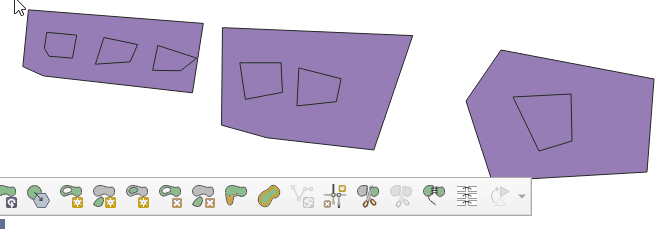I have a buildings layer that actually has a flaw. The inner courtyards, drawn as another polygon within the building polygon, should be islands of the building polygons. Instead, they are other polygons inside the buildings polygon (and reside in the same layer).
If I use the geoprocessing tools like Intersect, they don't work well because it also intersects each building with the building itself and not the building just with the inner courtyard.
For the intersection to work correctly, I should select only the polygons that are inside other polygons (inner courtyards) and when using the Intersection tool on the overlay layer check the "Selected objects only" box. This way it works in the tests I've done.
My problem is how to select the polygons (inner courtyards) that are inside other polygons without doing it manually because I have more then 8000 buildings…
I've tried using the "Select by location" tool but always selects all the polygons for the same reason explained before. Same thing happens to me using Postgis functions like ST_Contains or ST_Within…




Best Answer
To
SELECTNote that the
EXISTSconstruct is slightly more performant and more elegant than aJOINin cases where multiple courtyards exists for a single house.To
UPDATEthose that contain others with the footprint of those contained (subtract courtyards from houses; produce Polygons with inner rings):Oviously, this will alter data in your table - make sure that is what you want. Note that this fails in cases where the difference results in a multi-part Polygon - this would need to get handled either by changing the
geomcolumn definition, or by deleting the originals and reinserting single-part Polygons from a similar query.To
DELETEthose that are contained by others (courtyards):Obviously, this will erase data from your table - so make sure that is what you want before running this query; test a
DELETEby running aSELECT *instead and make sure the resulting rows are what you intend to delete!Finally, to
CREATEa newTABLEwith only those that contain others, with the footprint of those contained removed:This is probably the best way to test the outcome. This query can also get improved to handle cases where the difference results in multi-part Polygons.